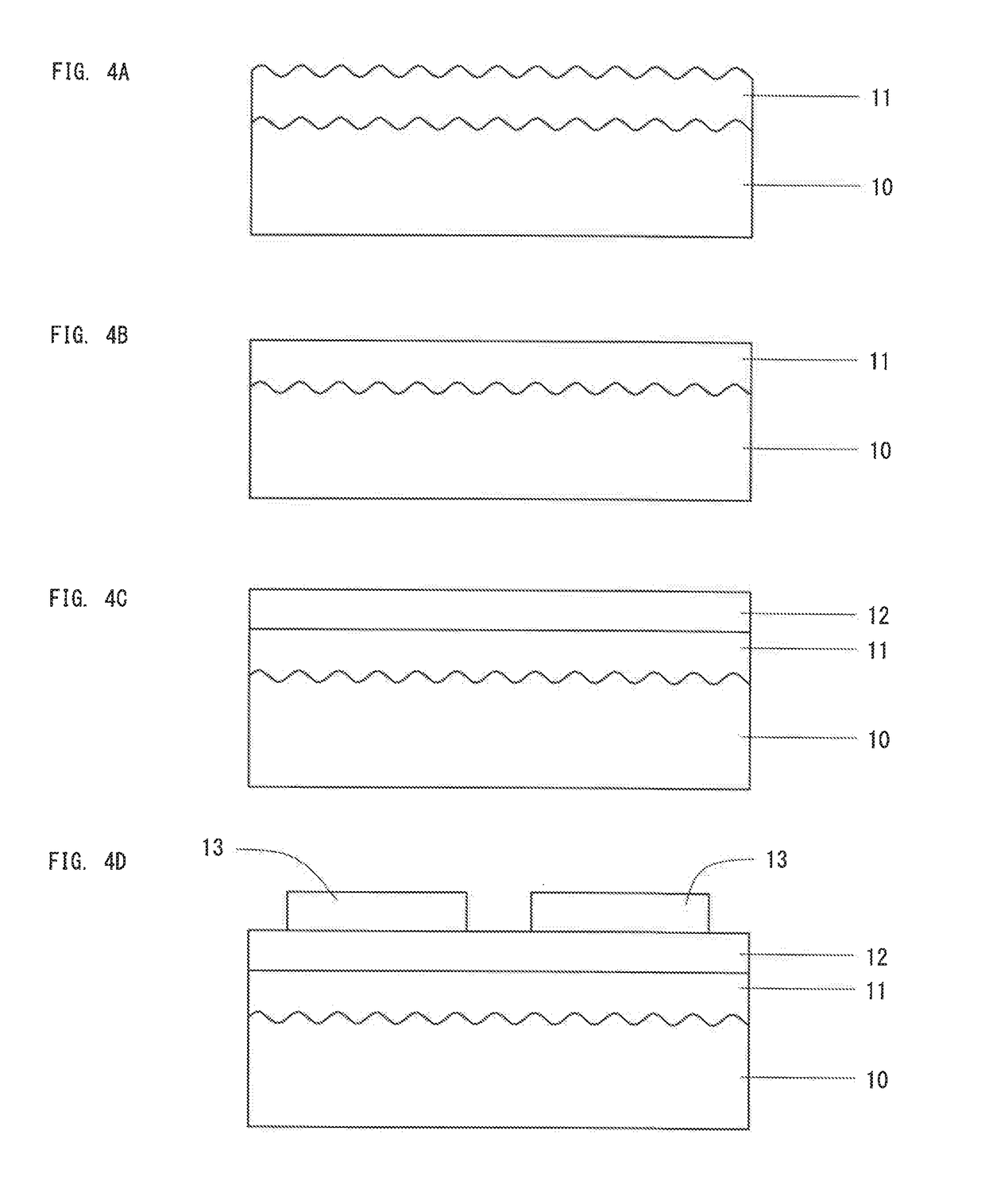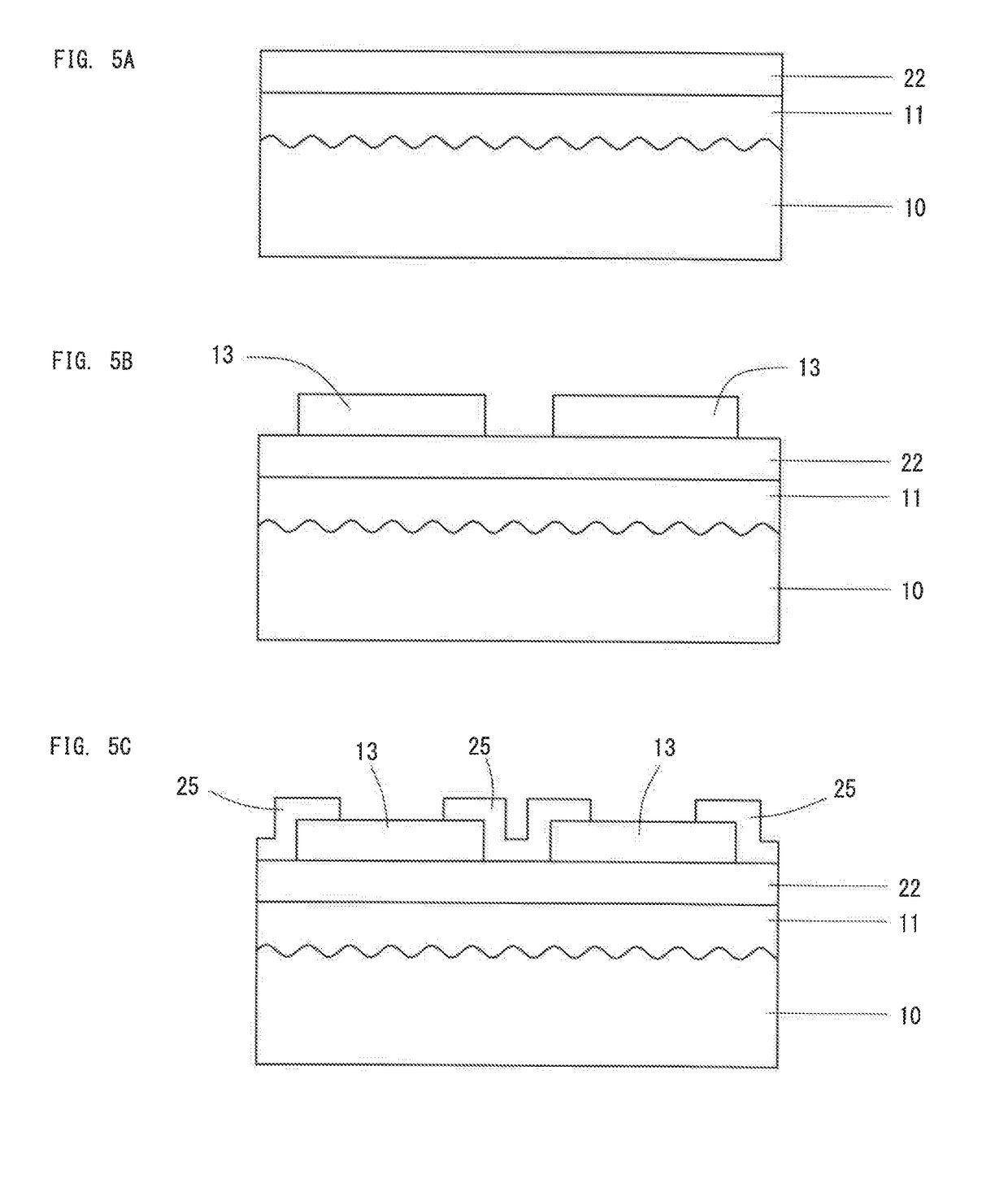Method for producing light-emitting device
- Summary
- Abstract
- Description
- Claims
- Application Information
AI Technical Summary
Benefits of technology
Problems solved by technology
Method used
Image
Examples
embodiment 1
[0021]FIG. 1 shows the structure of a light-emitting device according to Embodiment 1. As shown in FIG. 1, the light-emitting device according to Embodiment 1 has a mounting substrate 1 and a light-emitting device 2, and the light-emitting diode 2 is mounted on the mounting substrate 1. The light-emitting diode 2 may have any conventionally known structure, and may be covered with a resin layer mixed with phosphor. For example, a white light-emitting diode may be achieved by having a structure in which a blue light-emitting diode 2 is covered with a resin layer mixed with yellow phosphor.
[0022]Next will be described the structure of the mounting substrate 1 in detail. The mounting substrate 1 has a substrate 10, a metal layer 11 formed on the substrate 10, a dielectric layer 12 formed on the metal layer 11, and an electrode layer 13 formed on the dielectric layer 12 as shown in FIG. 2.
[0023]The substrate 10 is formed of AlN, and has irregularities on the surface thereof, and the sur...
embodiment 2
[0050]In a method for producing a light-emitting device according to Embodiment 2, the processes for producing a mounting substrate 1 in the method for producing a light-emitting device according to Embodiment 1 are changed as follows. The description of the processes until FIG. 4B are omitted because they are the same between Embodiments 1 and 2.
[0051]In Embodiment 2, after the surface of the metal layer 11 is ground, a dielectric layer 22 made of SiO2 having a thickness of 300 nm is formed through CVD on the metal layer 11 (refer to FIG. 5A). The dielectric layer 22 may be a dielectric multilayer film as in Embodiment 1. When a metal with low reflectance is used as the metal layer 11, a reflective metal layer 15 made of a metal with high reflectance is preferably formed between the metal layer 11 and the dielectric layer 12 as in Embodiment 1.
[0052]Subsequently, an electrode layer 13 is formed in the same pattern as in Embodiment 1 is formed by vapor deposition or lift-off on the ...
PUM
 Login to View More
Login to View More Abstract
Description
Claims
Application Information
 Login to View More
Login to View More - Generate Ideas
- Intellectual Property
- Life Sciences
- Materials
- Tech Scout
- Unparalleled Data Quality
- Higher Quality Content
- 60% Fewer Hallucinations
Browse by: Latest US Patents, China's latest patents, Technical Efficacy Thesaurus, Application Domain, Technology Topic, Popular Technical Reports.
© 2025 PatSnap. All rights reserved.Legal|Privacy policy|Modern Slavery Act Transparency Statement|Sitemap|About US| Contact US: help@patsnap.com



